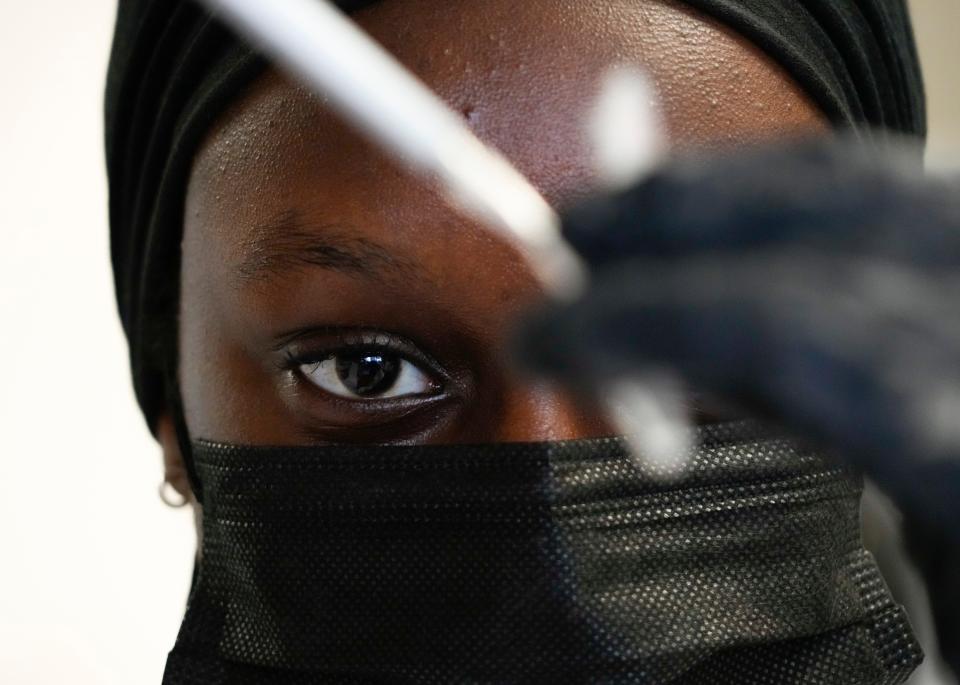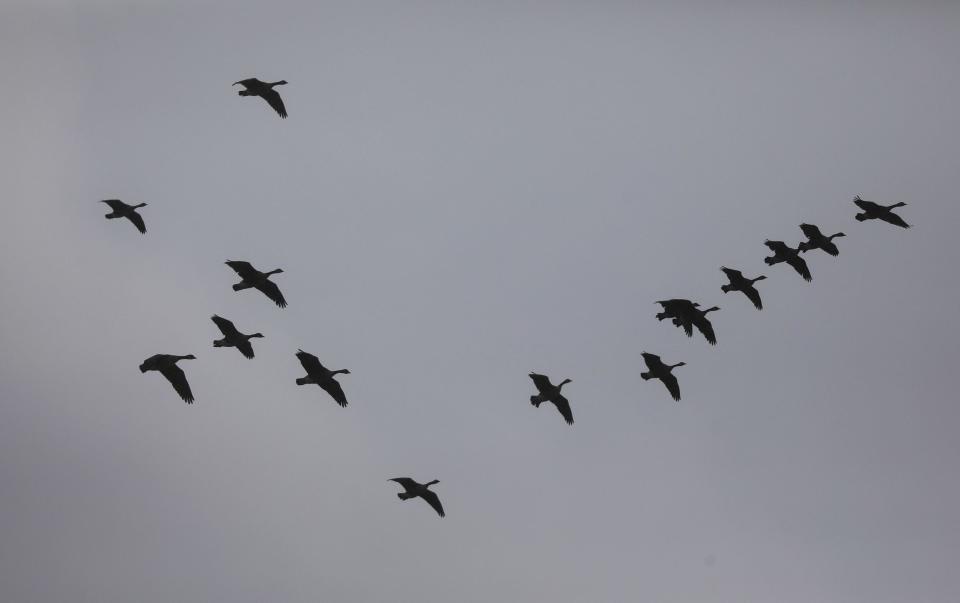Bird flu hit 25K birds in NY since 2022. Recent cases found in Monroe County, NYC
More than 25,000 birds in New York have been affected by the avian flu since 2022, including dozens of new infections uncovered this year in New York City parks and backyard flocks upstate, federal data show.
The avian influenza A (H5N1) virus was detected in 30 birds in backyard flocks in Monroe and Onondaga counties in February, while researchers recently found strains of the highly pathogenic bird flu spreading among some wild birds in New York City. Other wild bird cases were confirmed this year in Herkimer and Jefferson counties.
The bird flu outbreak raised alarms in late March following reports of one human case and infections in dairy cows in Texas and Kansas. While the public health risk remains low due to the rare spread of bird flu to humans, health officials urged New Yorkers to report groups of sick or dead birds and avoid contact with bird-related filth and feces.

Where is bird flu in NY?
New York has detected bird flu outbreaks in one commercial operation and 25 backyard flocks, with the largest single incident involving a gamebird producer on Long Island linked to 8,500 cases in 2022, federal data show.
Other sites where the avian flu spread included live bird markets in Brooklyn and Queens, as well as smaller poultry operations and backyard flocks upstate. Tompkins and Dutchess counties had the next-biggest outbreaks last year at 6,500 and 4,200 cases, respectively.
At the same time, bird flu has been confirmed in 357 wild birds — such as geese, ducks and hawks — statewide, though researchers have noted more surveillance is needed to understand the virus' true scope of spread in the wild.
In December, local and state officials linked two dozen dead Canada geese found in a public park near Rochester to the avian flu outbreak.
The recent New York City sampling was conducted by experts at the Icahn School of Medicine at Mount Sinai and the New York City Virus Hunters Program, as first reported by The New York Times.

How does avian flu spread?
Wild birds can carry the avian flu without looking sick and spread the virus to poultry birds (such as chickens and turkeys). Among poultry, the virus can cause sickness and death, spread quickly and be difficult to control. It can spread from an infected bird’s saliva, nasal fluid and feces, New York City health officials noted.
The risk to the general population from the avian flu strains currently spreading is low, as there have only been two human case confirmed in the U.S., the Centers for Disease Control and Prevention says.
Infection may occur after breathing in the virus from the air, or from touching something that has the virus on it and then touching their mouth, eyes or nose. Most infections globally occurred after extended and unprotected contact with infected birds. Poultry workers, backyard bird owners and wild bird handlers are at higher risk than the general public.
Candida auris: Where are the fungus cases in New York? What we know (and don't)
Can dogs, cats get bird flu?
The CDC has records of sporadic mammalian outbreaks of the bird flu in the past, impacting both wild animals like foxes and bears, as well as pets like dogs and cats. Officials believe these cases are caused by the animals consuming infected birds and poultry.
Protecting pets from bird flu: What experts say about keeping cats, dogs safe
Is it safe to eat runny eggs amid the bird flu outbreak?
The U.S. Department of Agriculture noted that bird flu "cannot be transmitted through safely handled and properly cooked eggs."
To safely handle eggs means to store them in a refrigerator at 40°F or colder as soon as you come home from the grocery store to prevent the growth of bacteria.

You also want to avoid using eggs that are cracked or dirty. And remember to wash your hands, utensils and surfaces with soap and water after they come into contact with raw eggs.
The FDA also recommends keeping raw poultry and eggs separate from other foods to prevent cross-contamination.
"Properly cooked eggs" refers to eggs that are cooked to an internal temperature of 165˚F, the CDC says, which is likely to kill disease-causing germs. In other words, over-easy and sunny side up eggs with runny yolk are not considered "properly cooked."
Eating eggs during bird flu outbreak: Here's what experts say about staying safe
How to prevent the spread of bird flu
Avoiding exposure in the first place is the most effective way to stop the spread, says the CDC.
Avoid direct contact with wild birds and observe wild birds only from a distance, whenever possible.
Avoid contact between pets (e.g., pet birds, dogs and cats) with wild birds.
Don’t touch sick or dead birds, their feces or litter or any surface or water source (e.g., ponds, waterers, buckets, pans, troughs) that might be contaminated with their saliva, feces, or any other bodily fluids without wearing personal protective equipment (PPE).
Avoid touching your mouth, nose, or eyes after contact with birds or surfaces that may be contaminated with saliva, mucous, or feces from wild or domestic birds.
Wash your hands with soap and water after touching birds or other sick animals.
Change your clothes after contact with wild birds, poultry and sick animals.
Katie Camero, Mary Walrath-Holdridge and Eduardo Cuevas of USA TODAY contributed to this report
This article originally appeared on Rockland/Westchester Journal News: Bird flu in NY: Recent cases found in Monroe County, NYC

